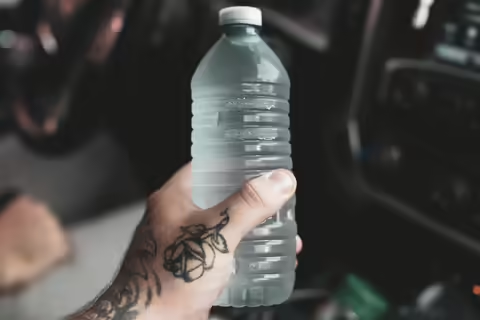URBANA, Ill. – What do shower curtains, store receipts, and plastic water bottles all have in common? These and many other common household items contain toxic chemicals that people are unknowingly exposed to every day.
“The way we are exposed to harmful chemicals matters most,” says Megan Woodbury, doctorate student in neuroscience at University of Illinois Urbana-Champaign. “The easiest way to ingest chemicals is through inhalation, followed by ingestion, and finally skin exposure.”
For example, when deciding which hand soap to purchase most people will choose an antibacterial product because it sounds more effective; yet, it may contain harmful chemicals that cause cancer or miscarriages.
The human body, especially the endocrine system, is sensitive to environmental chemicals. The endocrine system secretes hormones, such as estrogen, insulin, cortisol, and testosterone, that act like messenger molecules.
“Hormones are involved in all aspects of life, from growth to body temperature, stress, hunger, sleep,” says Woodbury. “They make sure our bodies function the way they are supposed to.”
Toxins that disrupt parts of the endocrine system are called endocrine disruptor chemicals, EDCs. They can mimic hormones, block them, interfere with their production and storage, and disrupt their transportation. This may lead to reduced fertility rates, early menopause, high blood pressure, and heart issues.
“Even low doses over time, during prenatal development and infancy have been associated with increased cognitive and behavioral problems, fertility issues, increased risk of diabetes, and certain cancers,” says Woodbury.
Common EDCs include BPA and phthalates, which are used to create plastics, personal care products, vinyl flooring, store receipts, tomato cans, and shower curtains. Exposure happens through eating contaminated foods or inhaling by-products, such as burning trash.
“The good news is that the regulation of chemical emissions from industrial processes has reduced emissions by 90% since 1987,” says Woodbury. “The bad news is there are persistent organic pollutants, or ‘forever chemicals,’ that don’t break down in the environment.”
These chemicals cause a variety of problems: cancer, liver damage, thyroid damage, slow brain development, estrogen level interference, and obesity.
Products labeled “BPA free” or “phthalate free” are not necessarily better choices.
“As consumers become more aware of the health effects of exposures of things like this, companies have been phasing out these chemicals and quietly replacing them with something else that has a similar chemical structure,” Woodbury says.
To avoid EDCs, wash produce before eating, keep dust levels down in at home by cleaning frequently, and wash your hands when handling flame retardants.
Tips to avoid EDCs
- Avoid personal care products labeled with phthalates or BBP, DDP, DEP, and DMP.
- Avoid products labeled with a recycling level three or seven.
- Avoid antibacterial products or products labeled “odor fighting.”
- Look for products labeled “fragrance free’” since fragrance formulas may contain phthalates.
- Use an alcohol-based hand sanitizer.
- Replace cooking ware with a ceramic coating instead of plastic.
- Remove the skin on fish and poultry.
- Replace old fluorescent lightbulbs before they die.
Woodbury's full presentation, "Our Chemical Environment: A Primer on Toxicology and Endocrine-Disrupting Chemicals," is available at go.illinois.edu/ChemEnv1.
SOURCE: Megan Woodbury, PhD. Student at University of Illinois Urbana-Champaign
WRITER: Erin Wunderlich, Writer, University of Illinois Extension
ABOUT EXTENSION: Illinois Extension leads public outreach for University of Illinois by translating research into action plans that allow Illinois families, businesses, and community leaders to solve problems, make informed decisions, and adapt to changes and opportunities.
